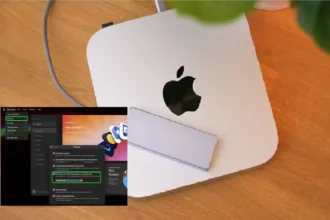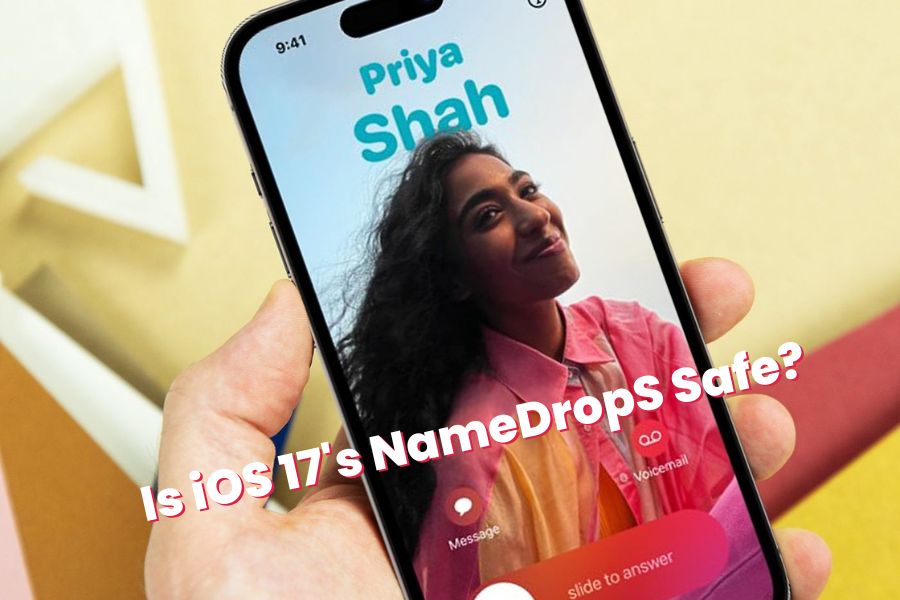Apple’s new NameDrop feature in iOS 17, which allows users to easily share contact information by bringing two iPhones close together, has raised some privacy and security concerns. In this article, we’ll analyze these concerns and whether NameDrop does indeed pose a risk.
What is NameDrop and How Does it Work?
NameDrop uses device-to-device communication technologies like ultra-wideband (UWB) and near-field communication (NFC) to enable contact sharing when two iPhones are brought in close proximity.
Here is a quick rundown of how NameDrop works:
- Both iPhones need to have iOS 17 installed and Bluetooth, WiFi, and UWB enabled. The feature also works with older iPhones that support NFC.
- On one iPhone, go to Contacts and create a Contact Poster under your profile. This poster will be shared with the other device.
- Bring the two iPhones close together near the top edges. Hold for 1-2 seconds.
- A prompt will appear on both screens showing the option to share contacts.
- If you accept, the contact details and poster from one device will be shared to the other device (and vice versa if both accept).
Privacy and Security Concerns
The main privacy concerns stem from the fact that NameDrop shows your name and profile information on another person’s iPhone without requiring any authentication from the owner.
Here are some specific scenarios that have raised alarms:
- Displaying private details publicly: If someone brings their iPhone close to your locked iPhone, your name and poster are displayed on their screen without requiring any input from you. This could potentially show private details publicly.
- Sharing when phone locked: It’s possible to initiate and complete NameDrop even if the receiving iPhone is locked and laying unattended on a table. There is no authentication required on the receiving end before sharing contacts.
- Unintended sharing: When iPhones are brought close together inadvertently, such as when pulled out of tight jean pockets, unintended contact sharing could be triggered.
- Children’s safety:NameDrop doesn’t differentiate between child and adult users. Contact sharing with strangers poses risks for children.
Addressing the Privacy Concerns
However, Apple has implemented certain safeguards:
- Explicit user consent required: Although profile details may show up on the other iPhone initially without authentication, the actual contact sharing occurs only after explicit consent from both parties by tapping ‘Accept’ or ‘Share’.
- Customizable profile: Users can choose what information to include in their shared Contact Poster. Sensitive details can be left out.
- Activation gesture: Bringing devices together for 1-2 seconds provides enough time to pull away your iPhone in case NameDrop gets triggered inadvertently. This activation gesture minimizes unintended contact exchange.
- Child safety protections: Communication safety protections that detect nudity in images/videos are extended to NameDrop’s Contact Poster sharing.
Assessing the Actual Privacy and Security Risks
When we analyze the specific scenarios, NameDrop does not seem to pose an egregious privacy violation or security risk:
- Showing basic profile information like name and contact poster publicly requires physical access to your iPhone. The actual contact details are still protected behind a sharing prompt. It is no more risky than someone glancing your iPhone lock screen.
- The argument that contact sharing works even on a locked iPhone holds little water. The threat requires the attacker to gain physical access to the unattended device AND the owner to consciously complete the sharing process after getting notified.
- Unintended contact sharing could occur in theory, but seems unlikely given the distinct one second activation gesture. Accidental triggers may be annoying but not harmful.
- Parents do need to be cautious about letting young kids use the feature, but child safety measures are in place for explicit content sharing.
Is Disabling NameDrop Necessary?
While an extremely privacy conscious user may want to disable NameDrop, there is likely no need for most users to completely switch off this useful feature due to the following reasons:
- Attack scenarios require physical access to your iPhone, making threats impractical in most real-world contexts
- Actual contact details stay protected behind the sharing prompt even if basic profile info is displayed
- Unintended triggers are improbable given the distinct activation gesture
- Child safety protections prevent inappropriate content sharing
If you remain uncomfortable, you can not only disable NameDrop but also toggle off Contact Poster sharing which shows basic profile information during device proximity. However, for most users the convenience of quickly exchanging contacts outweighs the minor privacy risks involved.
Conclusion
NameDropis safe to use on iPhone. While some privacy advocacy groups have raised concerns around unintended oversharing, Apple has designed reasonable safeguards.
Considering the contextual authentication, activation gesture, and child safety protections put in place, NameDrop’s privacy risks seem minimal. For typical use cases, you need not disable this useful feature that eliminates the need for manually adding contacts or awkwardly exchanging phone numbers.






